00:37
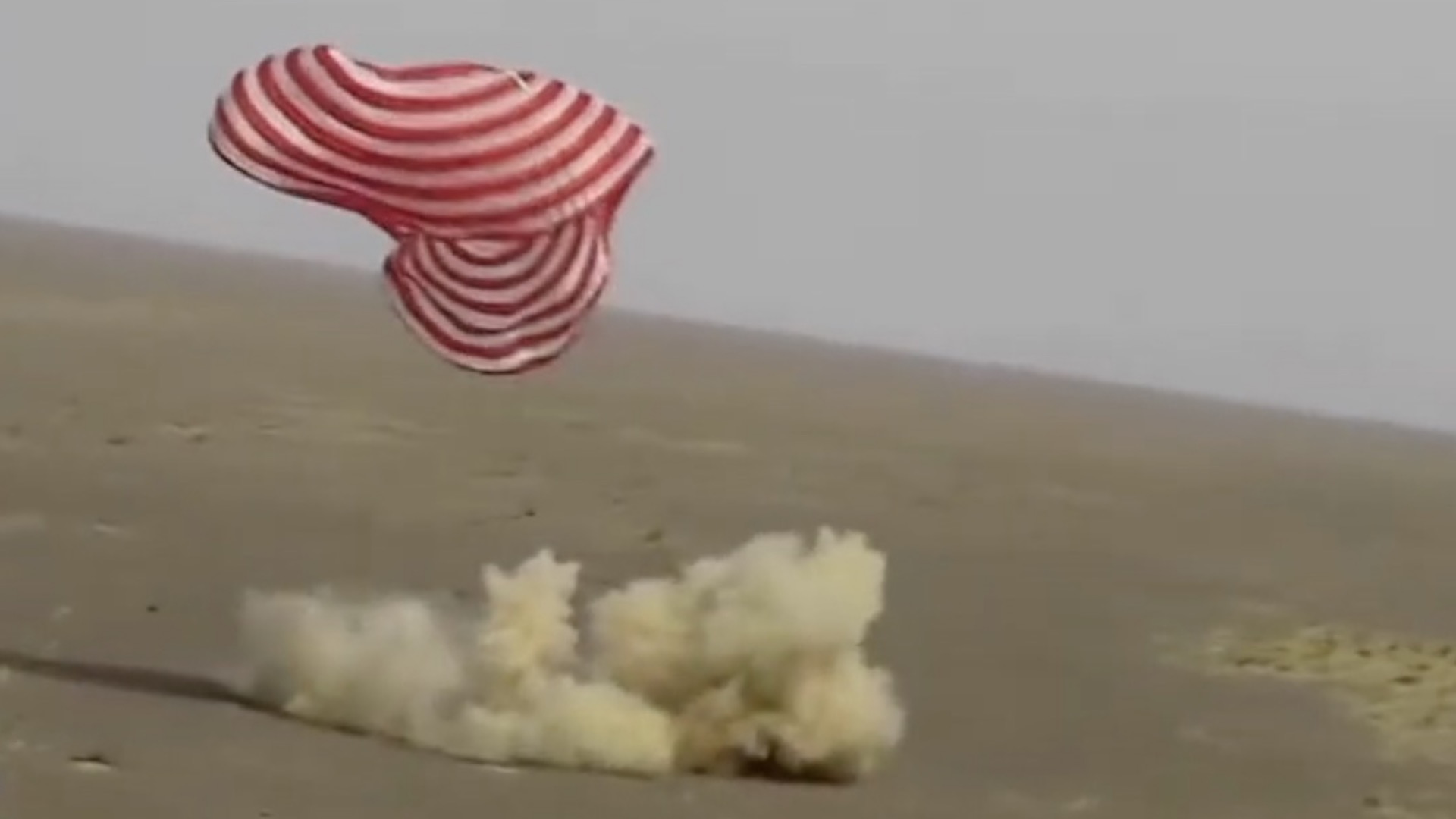
China's Shenzhou-13 astronauts, or taikonauts, Zhai Zhigang, Wang Yaping and Ye Guangfu, returned home safely on Saturday morning after a record-breaking 183-day mission in space.
The return capsule carrying the trio touched down at the Dongfeng landing site in north China's Inner Mongolia Autonomous Region at 9:56 a.m. after a journey of about nine hours from the country's space station.
China declared the Shenzhou-13 mission a complete success after the medical team waiting on site confirmed that all three taikonauts were in good health.
"All procedures went smoothly," said Sun Jun, mission chief of the Space Station Project at Beijing Aerospace Flight Control Center. "The re-entry capsule was in upright position and good for taikonauts to come out."
"The return mission is perfect," he said.
Click here for CGTN's livestream of Shenzhou-13's journey home
04:11
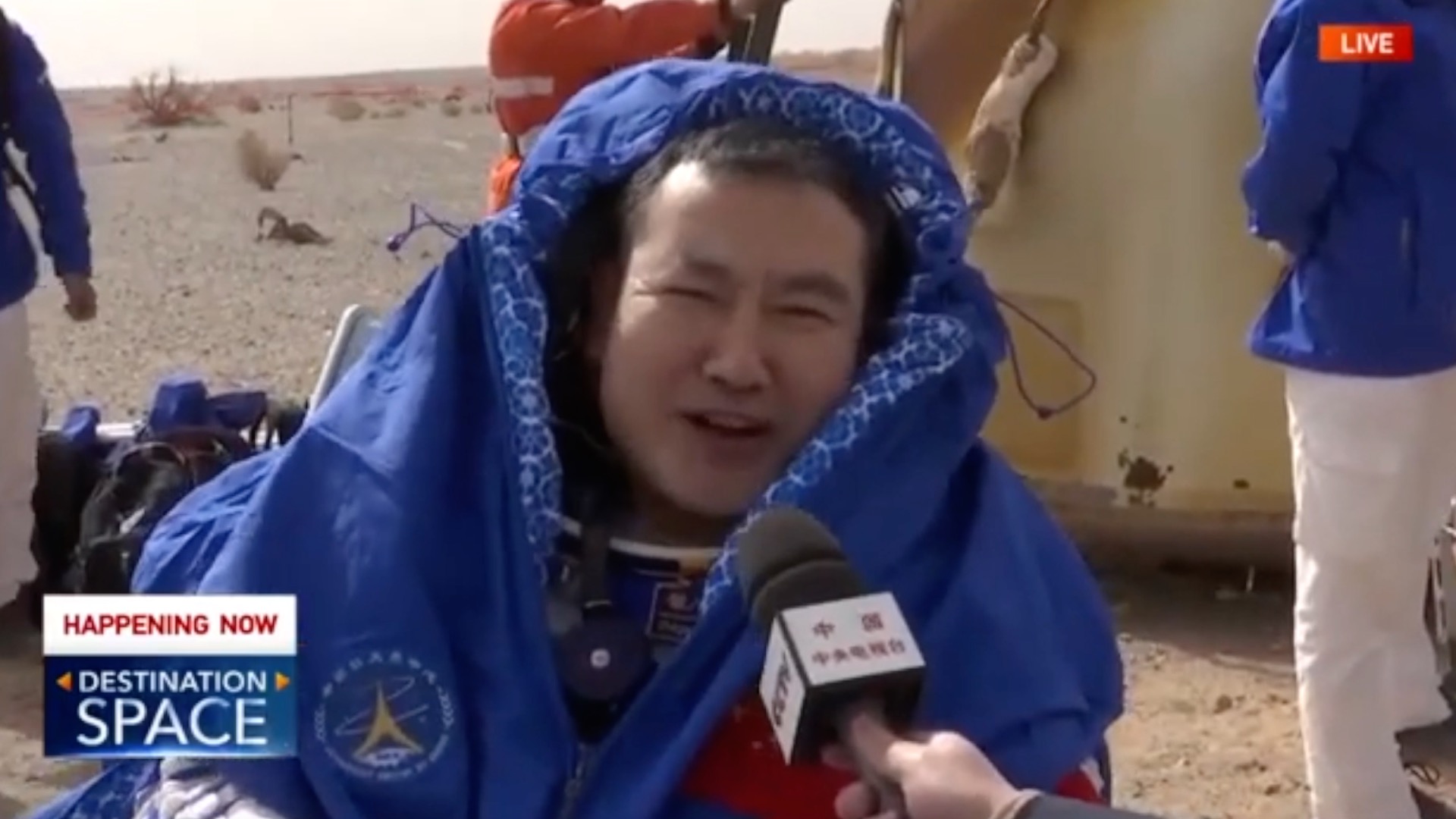
02:49
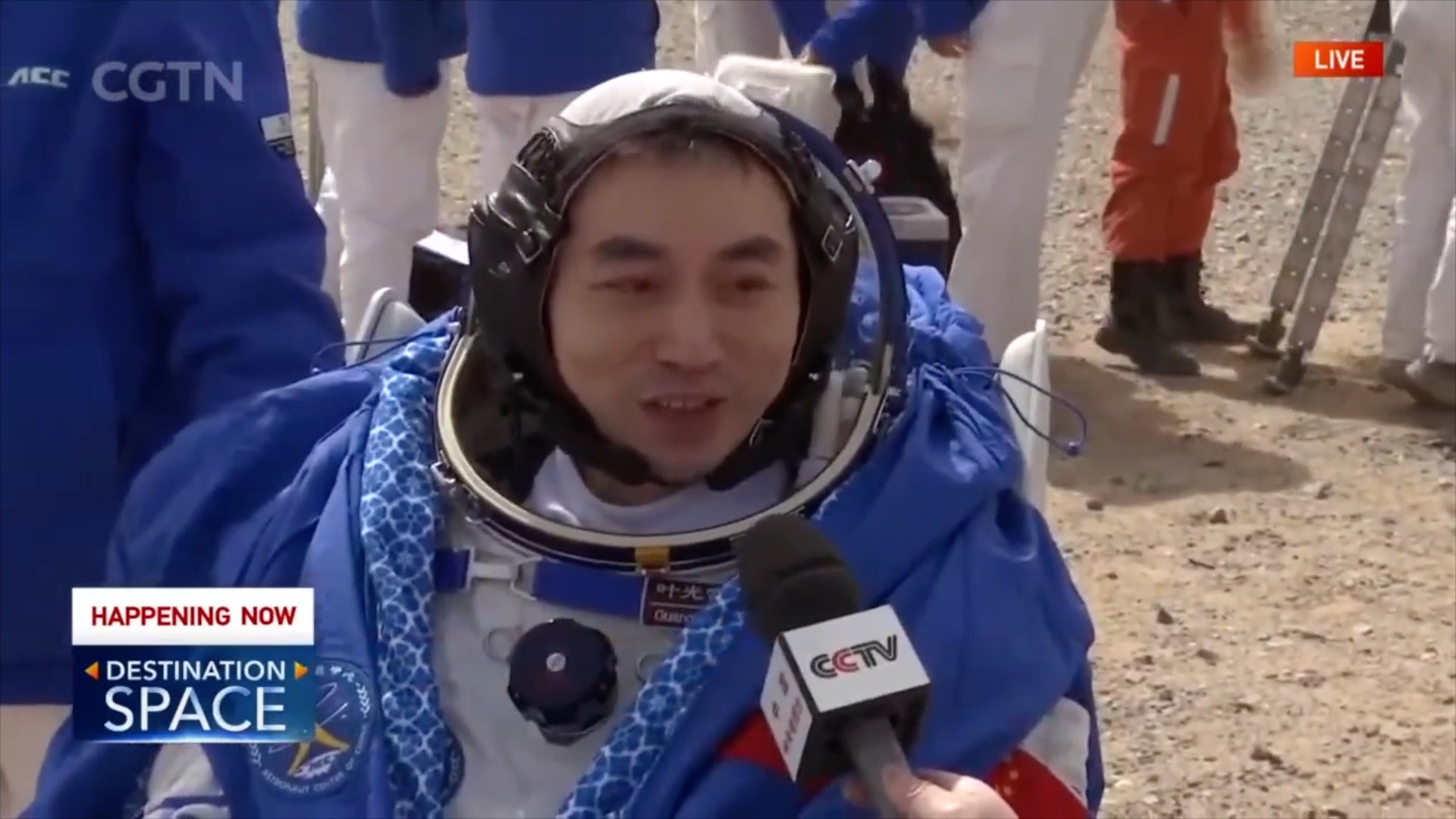
02:48
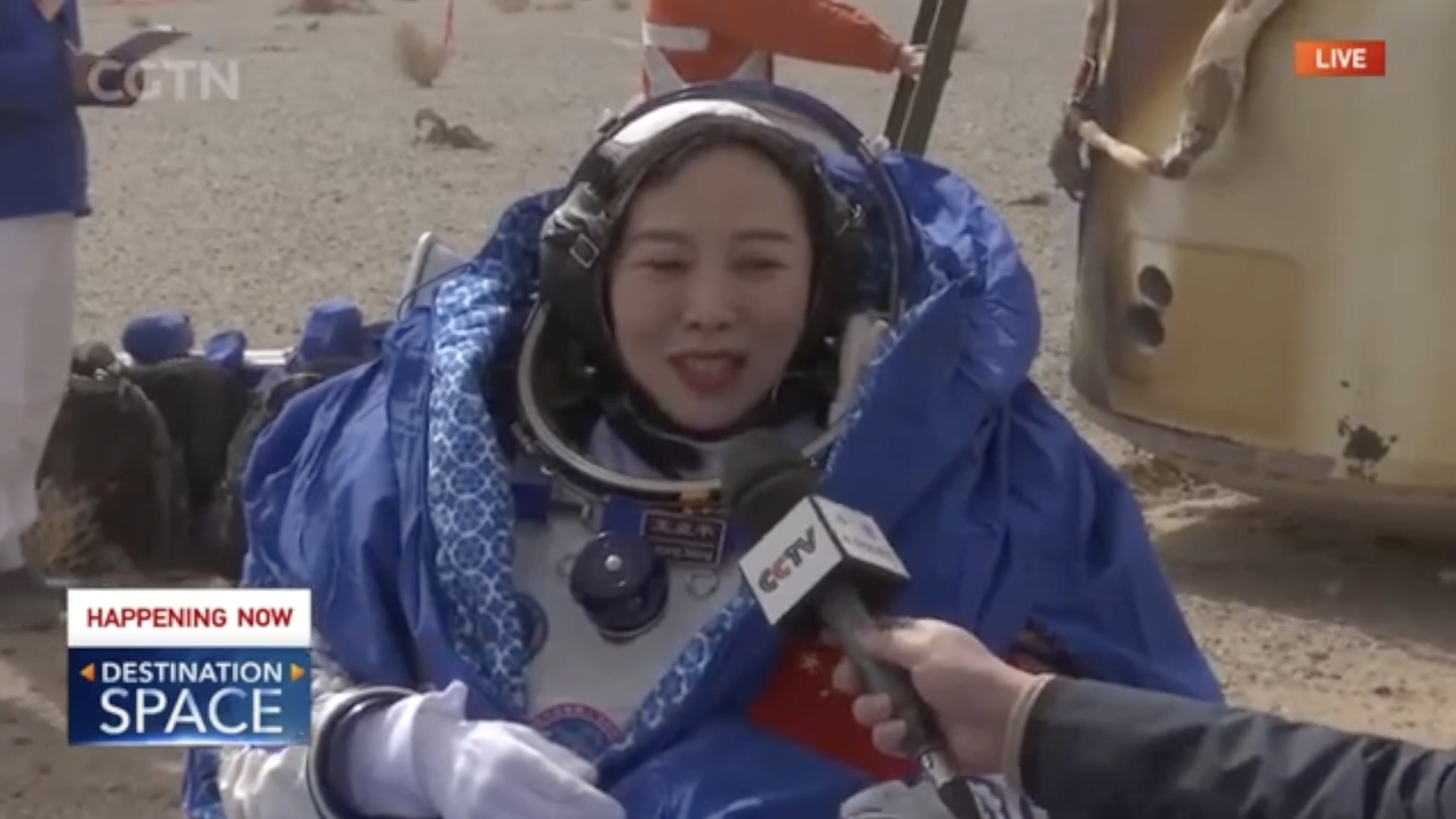
Zhai, the commander of the mission, was the first to come out of the capsule, waving to the cheering crowd on site with a big smile. He said he felt very good.
He was followed by Wang, the first female taikonaut to enter China's space station. "I want to tell my daughter, mom returned after reaching for the stars," she said.
Ye exited last from the capsule. "My first flight to space lasted six months, which was a challenge to me. My space dream came true," he said.
Read more: 6 months in space: What impact will it have on humans?
00:52
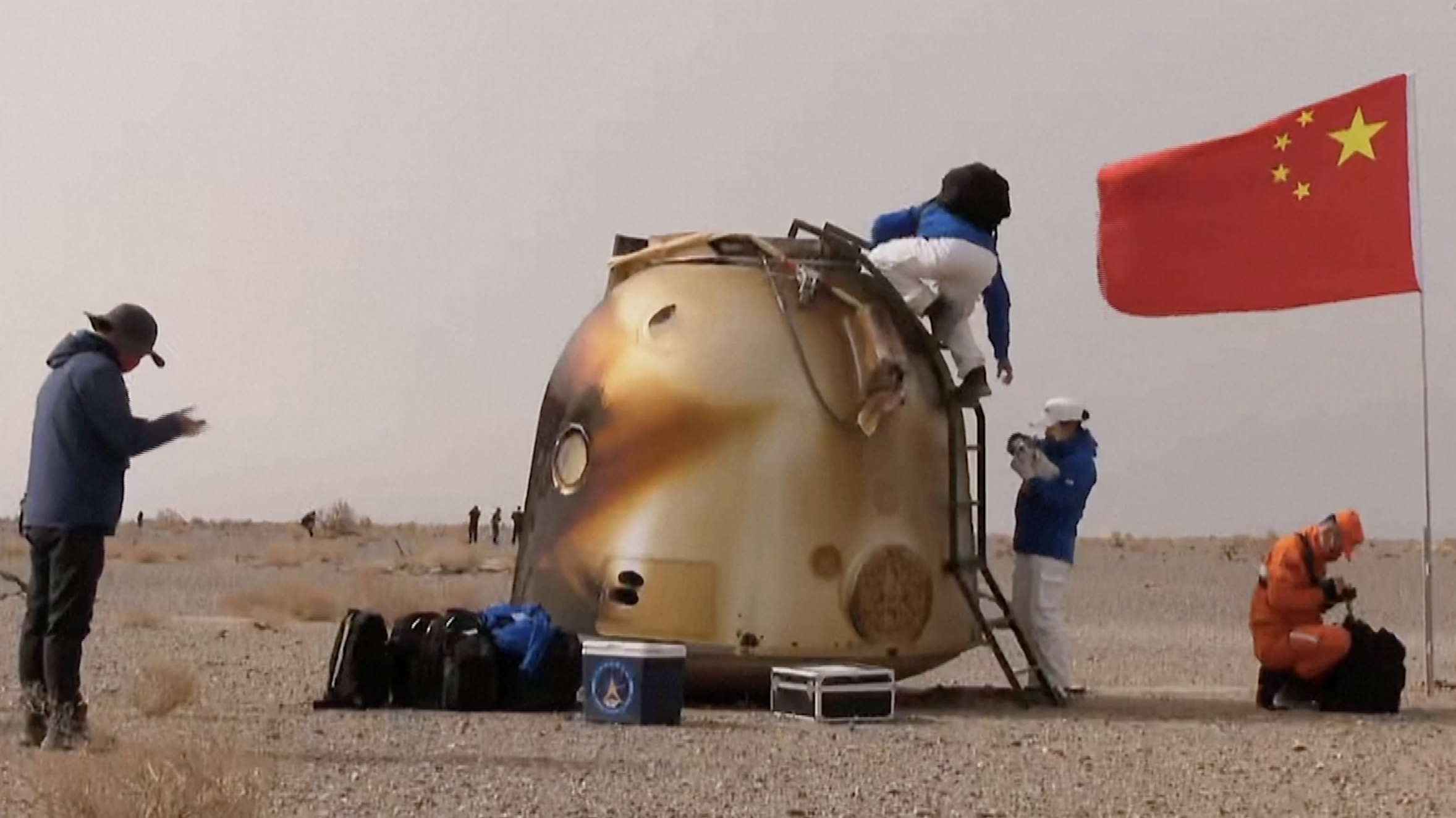
A fast trip home
The crew's trip home lasted just nine hours.
At 12:44 a.m., the Shenzhou-13 spacecraft, consisting of three modules – the return capsule, the orbital module and the propelling module – detached from the Tianhe core module of China's space station, which orbits the Earth at an altitude of about 400 kilometers.
At 09:06 a.m., the return capsule and the propelling module separated from the orbital module.
At 09:30 a.m., the braking engine of the return capsule started working to slow it down, and it then separated from the propelling module.
About 14 minutes later, the parachute of the return capsule was deployed.
And at 9:56 a.m., the return capsule successfully landed and the recovery team arrived at the landing point.
02:49
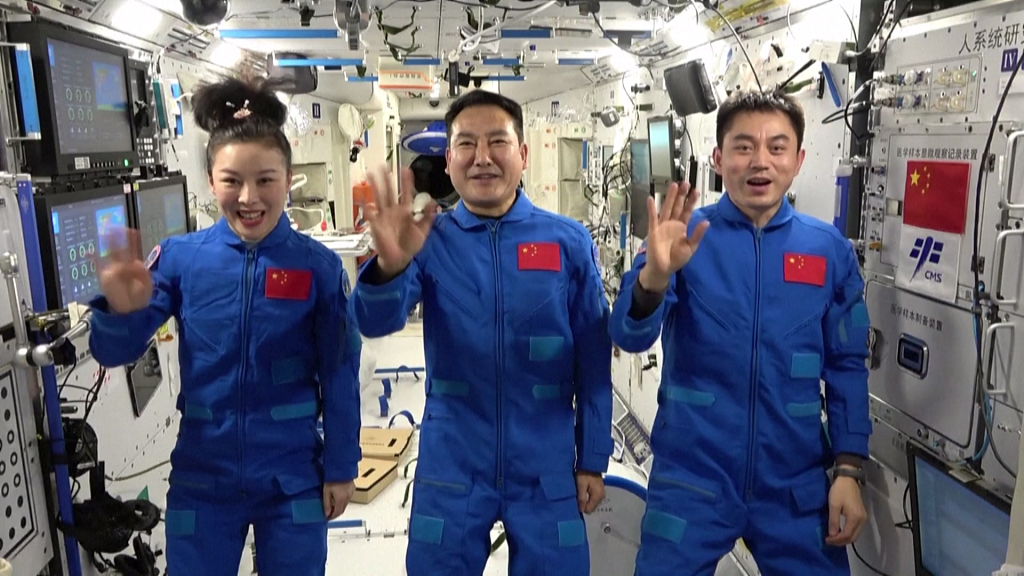
Highlights of the Shenzhou-13 mission
Launched on October 16, 2021, this was the second manned mission for the assembly of China's space station, following last year's Shenzhou-12 mission, which lasted three months from June 17 to September 17.
The Shenzhou-13 mission is the longest-ever crewed mission in the country's manned space program.
During their stay on board the space station, the crew verified key technologies, including the in-orbit transposition of the spacecraft and robotic arm operation of heavy loads, accumulating valuable experience for the subsequent in-orbit assembly and construction of the space station.
Two spacewalks were carried out by the crew. On November 7, 2021, Wang became the first female taikonaut to do a spacewalk.
Besides scientific missions, the crew also gave two live science lectures from the space station, during which they conducted various experiments and answered questions from students watching on Earth.
03:08

What to expect next?
With the completion of the Shenzhou-13 mission, the "technology verification phase" of China's space station project is over and it will now enter the "in-orbit construction phase."
"The key technology verification stage for the China space station has been a complete success," said Yang Haifeng, team leader of the Shenzhou-13 Spaceship Flight Control Technology Team at the China Academy of Space Technology (CAST). "We are ready to turn to the Shenzhou-14 and Shenzhou-15 missions. The future missions have very good footing."
Construction on the space station is scheduled to be completed in 2022.
The assembly phase during the six missions following Shenzhou-13 is expected to be particular challenging, according to Bo Linhou, the deputy chief designer of the space station system at CAST.
"There will be many first-time attempts, for example, in-orbit transition for space modules, and new attempts to move cargo out of the station for construction without taikonauts going out," Bo said. But he added these challenges will be sorted out with help from the ground.
China will launch this year the Tianzhou-4 cargo spacecraft, which will deliver supplies for the Shenzhou-14 crewed spaceship that will follow shortly after. Two lab modules, Wentian and Mengtian, will be sent successively into space.
Each lab module will first dock with the front docking port of the core module before being transferred by the space station's robotic arm to side docking ports.
This will create a T-shape complex once construction is complete.
China's finished space station will weigh nearly 100 metric tonnes. And it will be able to host six astronauts together, for a short period of time.
Referring to the current phase of development, Bo said: "I give 100 out of 100."
The Tianzhou-5 cargo spacecraft and the Shenzhou-15 crewed spaceship will then be launched to begin the in-orbit rotation of the space station's crew.
A telescope capsule will also be sent into space to fly in the same orbit as the space station to provide observation data for astronomical and physical studies.
After completing the space station, China plans to carry out more extensive and in-depth international cooperation.
Read more: China looks to have foreign astronauts on board its space station some day

